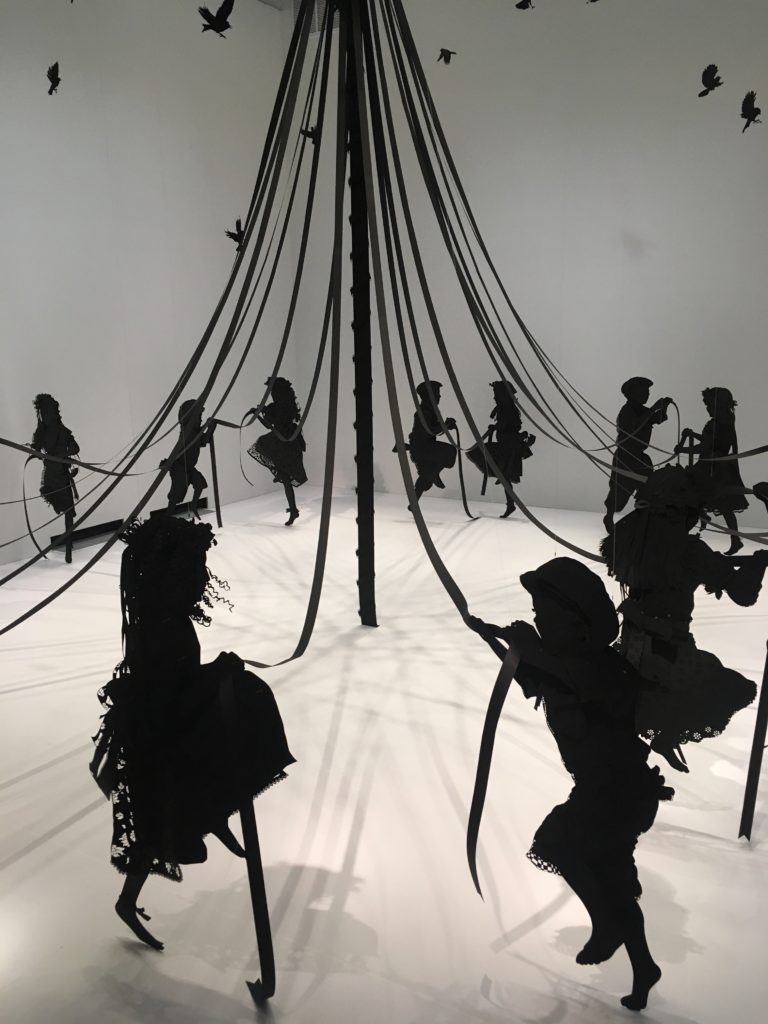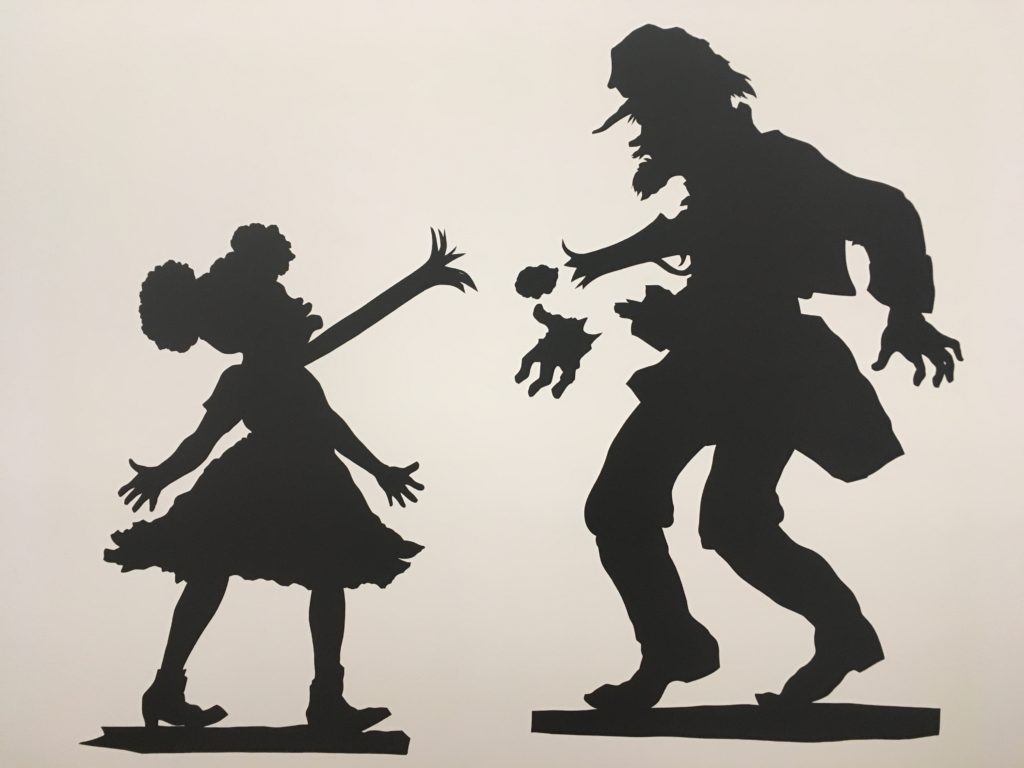Silhouettes at the Portrait Gallery
By • August 22, 2018 One Comment 2677

In one wide corridor and four side galleries, the Smithsonian National Portrait Gallery has installed “Black Out: Silhouettes Then and Now,” a thought-provoking — one might even say devious — exhibition that is almost entirely colorless.
It is also without big-name artists, apart from Kara Walker, who singlehandedly (and unpredictably) revived the silhouette as a contemporary medium in the 1990s.
There is a dominant figure, however: Auguste Edouart. Born in France in 1789, the year of the revolution, Edouart fled to England when the monarchy was restored. In London, he made mourning pictures that incorporated hair from their late subjects. This led him to begin cutting shadow portraits that Edouart referred to as silhouettes (a term for inexpensive knockoffs that paid sarcastic tribute to tightwad Étienne de Silhouette, finance minister to Louis XV).
The show includes about two dozen of Edouart’s full-body silhouettes, most the size of small paintings, with details added in white chalk. Created in the 1840s — when he traveled around the U.S. plying his trade, making thousands of silhouettes using embroidery scissors — they range from single and double portraits to group scenes, the backgrounds inked in gray or sepia.
His mostly prominent sitters included four presidents. Among the silhouettes on display are those of Godey’s Lady’s Book editor Sarah Hale, shown holding a letter, her shadow and the shadow of her elegant chair falling on a minimally indicated carpet; Chin Sung, a Chinese man with a long queue (pigtail) brought to Massachusetts by a medical missionary, depicted in an elaborate interior complete with Chinese scroll; and Dalmany, an 18-year-old woman — her silhouette extending to the ribboned hat she holds — who was the property of a New Orleans steamboat captain.

Silhouette Portrait of Sarah Hale, 1842. Auguste Edouart.
A large Edouart composition, “South Sea Islanders,” presumably imaginary, includes more than 20 figures receding into a mountainous tropical setting. In the foreground clearing, a man is about to strike another with a war club.
Four display cases in the center of the corridor contain a mahogany physiognotrace, a machine for cutting silhouettes, used by painter Raphaelle Peale; the ledger book of silhouette artist William Bache, containing the profiles he saved from more than 1,800 portraits; an 1872 set of porcelain tea cups and saucers decorated with silhouette vignettes; and a Liverpool ware jug, circa 1808, commemorating the 10th anniversary of the first African American Masonic order, incised with a silhouette of co-founder Absalom Jones and various Masonic symbols.
Race relations is a theme that comes naturally to a show of black-and-white art. Curator Asma Naeem, who organized “Black Out,” became aware of a life-size cut-paper profile of “a certain negro wench named Flora” in the collection of the local historical society in Stratford, Connecticut. Borrowed and conserved by the Portrait Gallery, the haunting silhouette of a girl whose hair has a softly spiky edge is displayed with her bill of sale; in 1796, when she was 19, Flora was purchased by a Stratford couple for 25 pounds sterling. (Though gradual emancipation began in Connecticut in 1784, the state did not abolish slavery until 1848.)
In the gallery devoted to Kara Walker are two wall installations, “Auntie Walker’s Wall Sampler for Savages” and “Auntie Walker’s Wall Sampler for Civilians,” both from 2013, and “Burning African Village Play Set with Big House and Lynching” of 2006, a grouping of metal silhouette figurines. The three works are examples of the practice for which Walker has been acclaimed and, at times, attacked: putting 19th-century racist visual tropes — kerchiefed mammies, cartoon pickaninnies, etc. — in settings that are gruesome, surrealistic or both.

“Auntie Walker’s Wall Sampler for Civilians” (detail), 2013. Kara Walker.
The other contemporary artists who were each given a gallery to herself are Kristi Malakoff, Camille Utterback and Kumi Yamashita.
Malakoff’s “Maibaum” of 2009 was inspired by May Day festivities in her native British Columbia. Frozen in a circle of light in a bare white room, 20 children in detailed Victorian costume hold ribbons attached to a maypole, birds flying (hanging, that is) overhead, all in black silhouette.
An oasis of color, the interactive piece by Utterback, who teaches at Stanford, is a wall screen resembling an overly bright Abstract Impressionist painting. When a visitor passes in front of it, he or she is picked up by a digital drawing system, making lines and waves of textured color on the screen.
Finally, Yamashita — who was born in Japan and studied in Seattle and Glasgow — is represented by three head-scratchers; in her precise setups, light projected over unlikely objects casts uncanny shadow profiles.


Ridiculous story there. What happened after?
Take care!